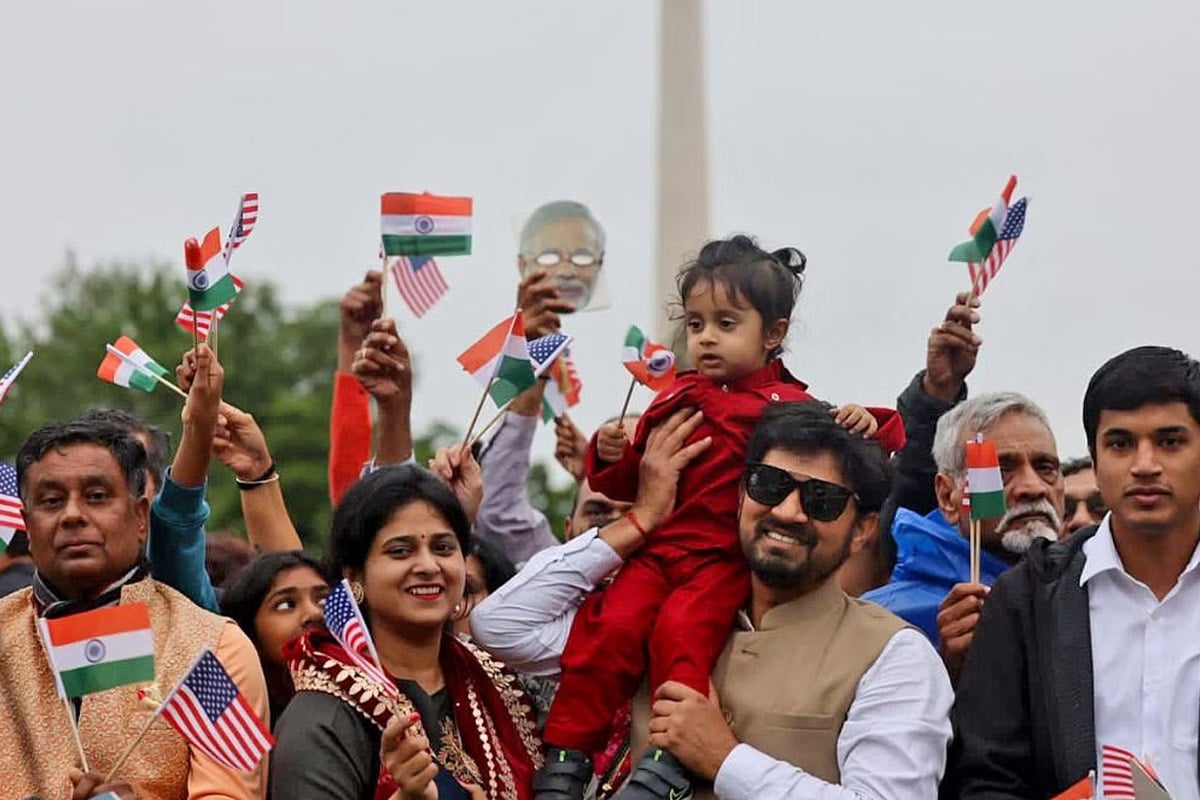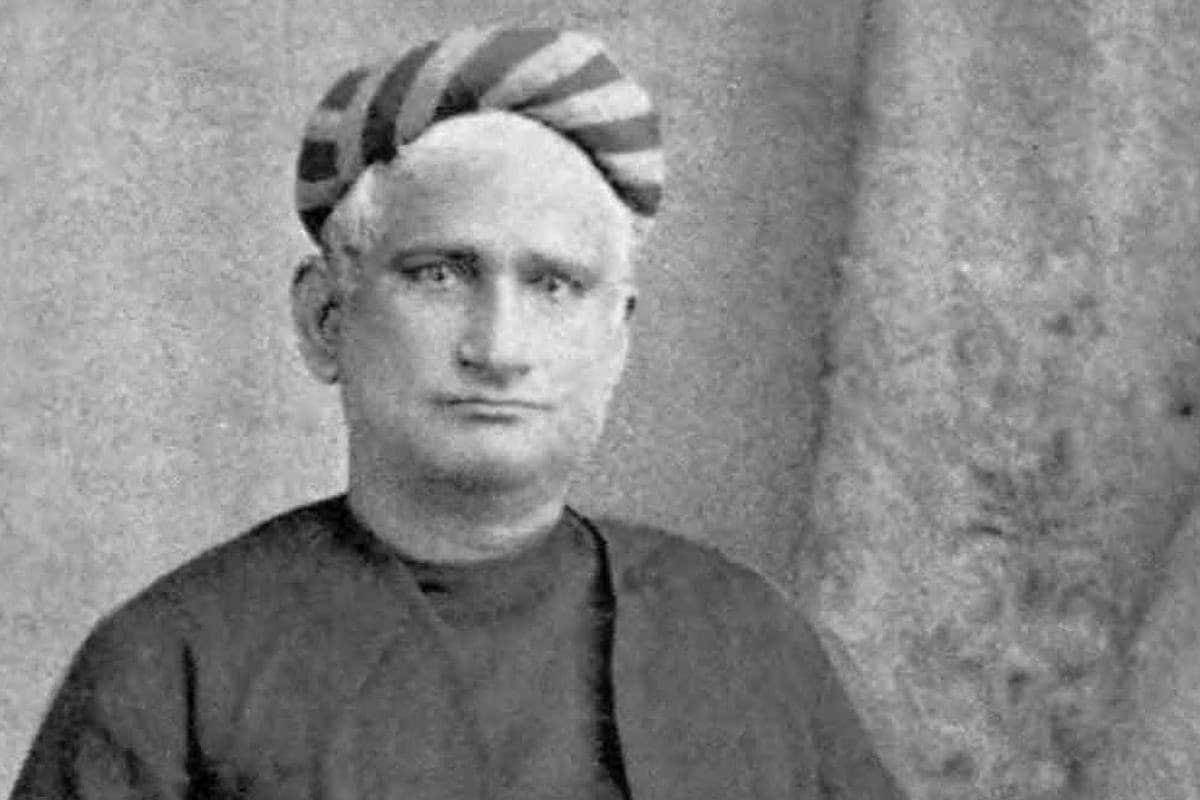‘Gangbusters’ domestic economy sees prices rise at India Art Fair
Quiet confidence has turned into bullishness at the 15th edition of India Art Fair (IAF) in New Delhi (until 4 February), South Asia’s largest commercial art event. “The economy is going gangbusters, that can only trickle down into the art market,” says Peter Nagy, the founder of the city’s Nature Morte gallery. Nature Morte reportedly sold 85% of its stand at yesterday’s VIP preview, including a sculpture by the market star Subodh Gupta for €250,000. What’s more, it has now established previously unseen waiting lists for younger artists like Tanya Goel, whose painting sold for $17,000.
The Indian century is finally here. The UN projects the nation’s economy will be the world’s fastest growing this year. Buoyed by this outlook, the domestic art market is now punching at its weight: according to a recent report, quoted by IAF, auction turnover in India for the financial year 2023 was $144m, which is a record.
This is largely thanks to sales of Modern art, with prices for early and mid-20th century brand names soaring. A case in point is another leading New Delhi dealership, Vadehra Art Gallery, which yesterday sold a Tyeb Mehta painting to an institution for a price “in line with those at auction”, says the gallery’s director Roshini Vadehra. (Mehta’s work regularly fetches upwards of $2m at auction). “The market is on fire, supply is outstripping demand,” she says.
This heat is warming up the prices of some younger artists. One of the country’s most prestigious galleries, Chemould Prescott Road from Mumbai, is offering a large printed textile work by Jayeeta Chatterjee, who is not signed and who is yet to have a solo show, for around $8,500—a small figure within the global context, but a clear vote of confidence in the artist’s commercial trajectory.
These changes are being remarked on by a number of art market pundits in the fair halls. “Now is your time to sell a work by [20th-century painter] S.H. Raza—you can name your price. And so younger artists are becoming more expensive,” says Franck Barthelemy, a dealer based between Bangalore and Paris. This is echoed by one fair visitor who acquires art for the corporate and private collections of a “prominent industrialist family”. Speaking anonymously, she says that she has noticed a “big jump even from last year” for mid-career Indian artists such as Manisha Parekh, as well as younger names. Prices for works by the 34-year-old Maha Ahmed at Galerie Isa have increased some “40% from last year”, she adds. Two works on paper by Ahmed were sold to Indian collectors on VIP day, for around $10,500 and $13,000. Isa’s director, Ashwin Thadani, notes that Ahmed also has international representation with Kristin Hjellegjerde (London, Berlin and Palm Beach), allowing for her prices to be pegged to Western markets.
Boom, bust and boom again
Rising figures across various tiers of the primary market are the “natural result of a maturing ecosystem”, says IAF’s director, Jaya Asokan. “Galleries now have more confidence to price less conservatively.” But an Indian art market in seeming rude health rings alarm bells for some. The last boom, in the 2000s, was swiftly followed by a crash. Can this new swell of activity can be sustained?
Regular IAF exhibitor Mort Chatterjee co-founded the Mumbai gallery Chatterjee & Lal in 2003, at the beginning of the last boom. He says of rising prices for emerging artists: “We could be having this same conversation in 2005, as the market began to peak. Older collectors are once again being priced out of the Modern category and shifting towards less-established artists.” Nonetheless, the industry is now more substantial. “In the 2000s there wasn’t really an Indian contemporary art market to speak of. If this all bottoms out tomorrow, we have a larger, more reliable pool of collectors to fall back on.” He adds that interest from investment funds in contemporary art is not as noticeable as it was 20 years ago.
Others are more wary: Natasha Jeyasingh, an Indian art consultant and curator, notes that the prices of new artists are beginning to match, and even outstrip, the prices of those who have been showing for a decade or longer. “I am seeing younger collectors being priced out of buying works by artists of their own generation. This might be fine for now, but artists need to be sold to their peers. The most successful artists today have been bought by collectors their own age for 20 or 30 years. That plays a big part in building a healthy market. I worry that we are losing that relationship between artists and collectors.”
But signs of measured growth are still found across the fair. Mumbai gallery Project 88 presents a tasteful stand of works—mostly sculptures in muted tones—by artists including Hemali Bhutta and Prajakta Potnis. Their careers have “developed with the gallery” over the past 15 years and have now “hit a sweet spot”, says Project 88’s founder, Sree Banerjee Goswami. Most of them have shown in major biennials, from Shanghai to Sharjah, but much of their work can be purchased for between $8,000 to $15,000.
Indeed, India remains relatively affordable, at least for Western visitors. One US collector; who wishes to remain anonymous, says that IAF presents bargains compared to what she finds at many other fairs. “Artists don’t jump around galleries as much in India, so there aren’t these huge jumps in prices once they get picked up by a bigger dealer.” Asked whether this could change, she responds, “more people are taking note in India for sure. The market could turn soon.”
International attention on the domestic market feels particularly pronounced at the fair this year. Joining groups from around 10 museums from the US and Europe, including the Los Angeles County Museum of Art (Lacma), are a number of star curators such as Stuart Comer, Klaus Biesenbach and Aaron Cezar. Cezar took part in a talk with Sangita Jindal from the billionaire Jindal family, which will open the artist residency and exhibition space Hampi Art Labs next week. It is one of a mushrooming number of private institutions funded by South Asian industrialists that are helping to put the region on the world stage.
But as the market matures and prices rise, its longstanding players are keen to point out that these changes didn’t happen overnight, or without the sustained efforts of the artists and their dealers. A crowd favourite at this year’s IAF are a suite of erotic and risible paintings, drawings and textile works by the mid-career artist T. Venkanna, shown at the stand of the Mumbai gallery Maskara. While the most expensive of these is priced at around $120,000, his drawings start from around $600. “There is something for everybody here. No one is priced out,” says the gallery’s founder, Abhay Maskara. “This has been a 15-year journey and he’s had a solo show pretty much every year,” he adds. “We haven’t forced a conversation around these prices.”
The lessons learned over the past two decades are evident not only in the practices of IAF’s galleries, but the fair itself. For example, efforts have been focused on developing a base of collectors in Indian cities such as Pune and Chennai, which are currently less central to the art market but where wealth is rapidly increasing. “We organise collector’s weekends across the country. One group from Varodara came to last year’s fair and ended up buying works by big international names,” Asokan says.
Yesterday a new award was announced. The annual Motwani Jadeja Art Prize is worth $100,000—making it the nation’s largest prize of its kind. It will go to one Indian artist and support the realisation of an “ambitious, large-scale outdoor art installation”, unveiled at the next edition of IAF. Such financial support is quite unprecedented for India’s artists and will help raise their ambitions. It attests to efforts to reinvest the spoils of the booming economy back into the region’s arts infrastructure.
“We don’t vie to be an international fair, we’re proud to be regional,” Asokan says, echoing a strategy IAF has pursued for some years. It looks like that strategy is paying off.



